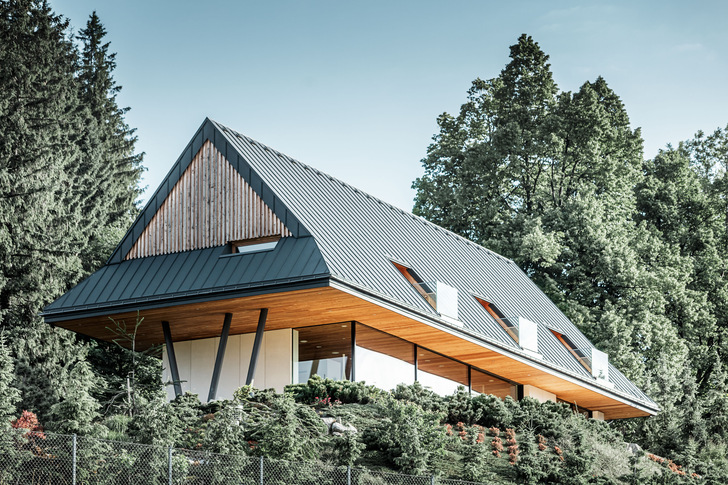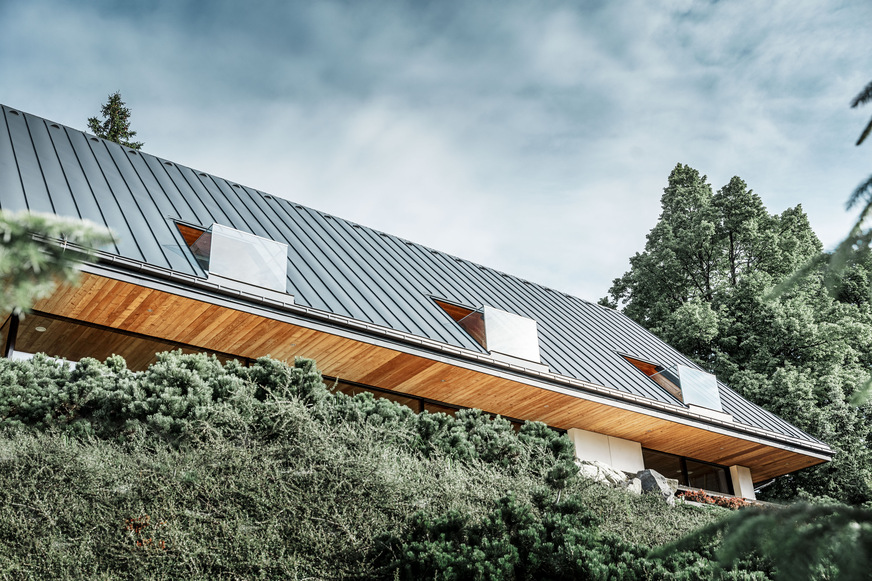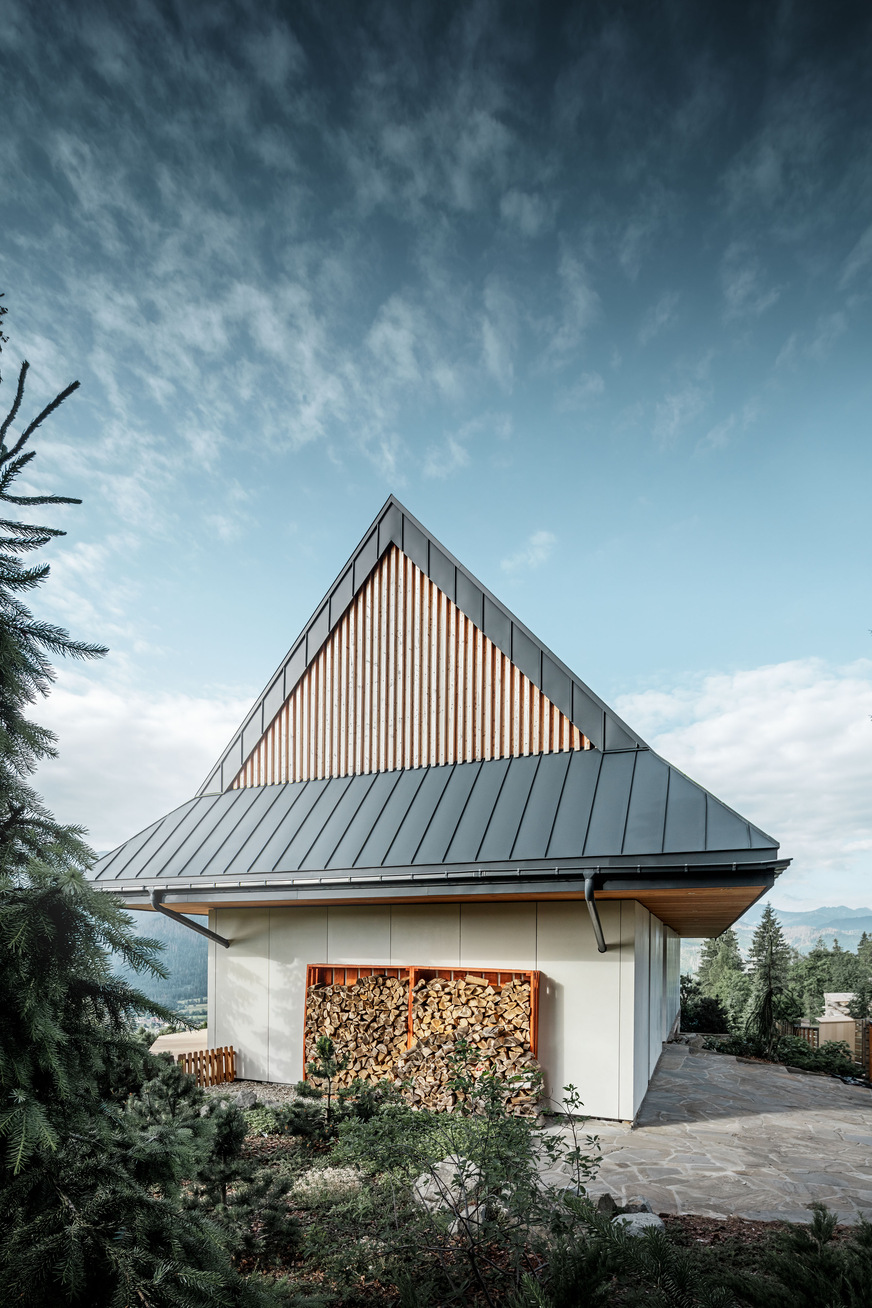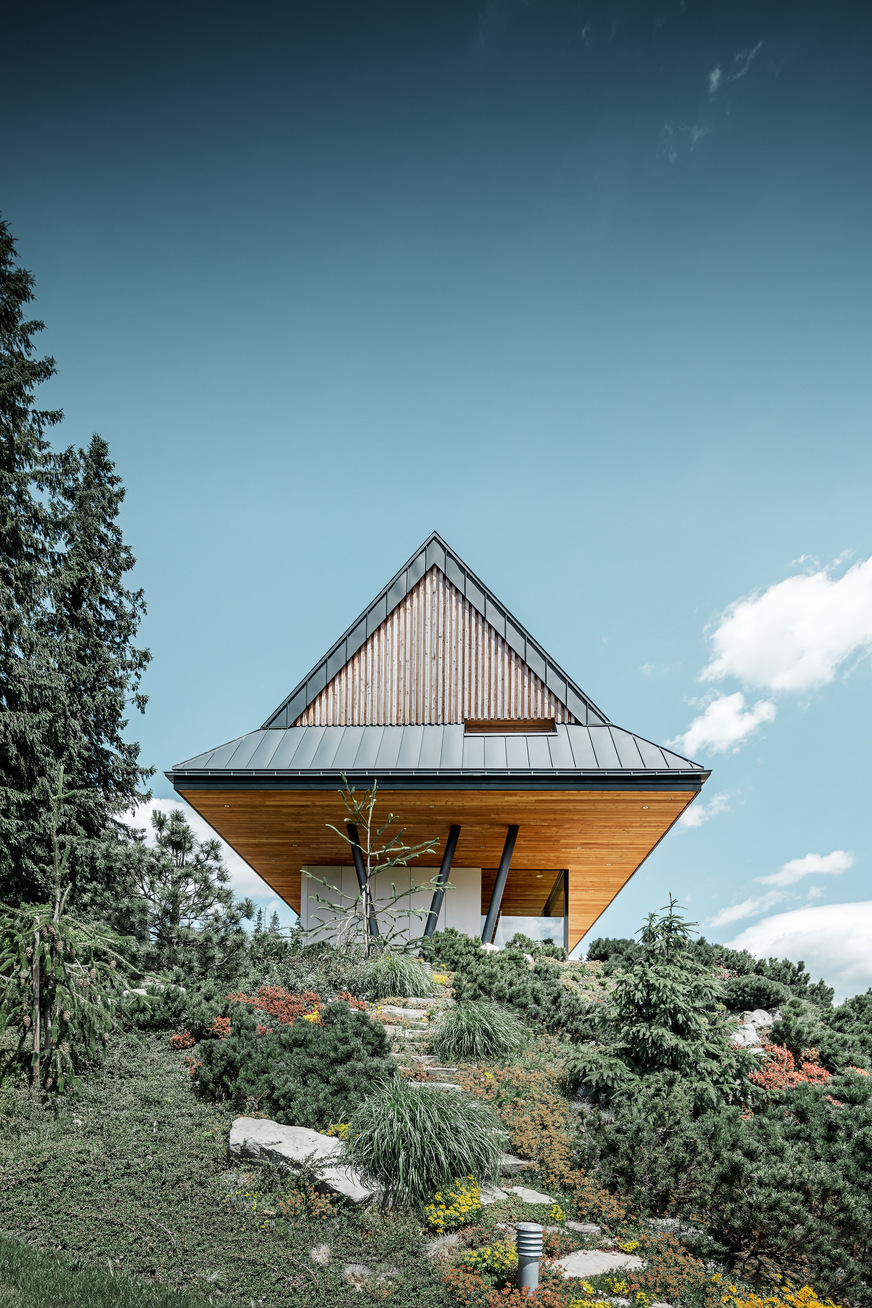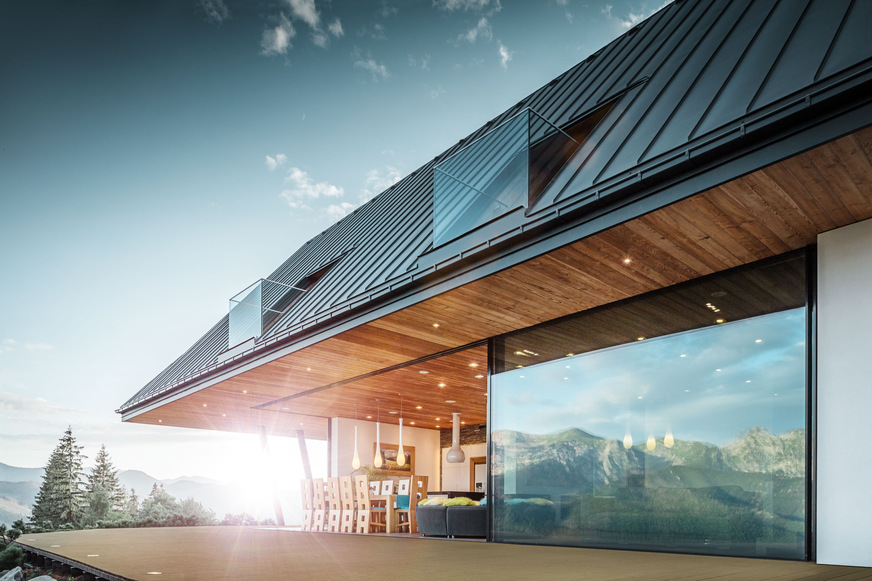Wood is the predominant material in Zakopane. No wonder then that the Zakopane style, similar to Alpine style, is characterised by wood. There are only a handful of homes indicative of the traditional style. Jan Karpiel and Marcin Steindel are setting out to change that: “We want to give Zakopane a new, modern appearance,” says Jan Karpiel junior. The pair have put their goal into practice. One of the first objects to boldly go in this direction is “Tatra House.” A weekend abode on the outskirts of Zakopane, boasting a unique view of the the High Tatra Mountains.
And it’s this view that stands centre in the concept, a feature of the house. The mountain views should be impeded as little as possible. Karpiel and Steindel vitrified the entire southern face. The panels are mounted in the ground and in the rooftop with embedded tracks. This allows them to disappear entirely and provide an unimpeded, breathtaking view of Poland’s highest peaks. The steep roof and its traditional form appear to hover as if by magic.
At light speed into the present
In addition to glass on the southern face, this house features wood in conjunction with concrete and aluminium—all of which are decidedly atypical for Zakopane. These materials transport the somewhat antiquated Zakopane style into present day at light speed. Today, the house has received numerous awards and features prominently in the Polish winter sports resort. At the time of construction it created quite the controversy.
“The house is different. People here are unaccustomed to such a thing,” says Marcin Steindel. The estate is neighboured by a small church and surrounded by homes in the classical style of wood and stone. “Concrete, however, is a type of modern stone,” says the architect. The proportions of the house match well with its neighbours. “It all speaks a new language of architecture,” emphasise Karpiel and Steindel. “It is bold. For some, too bold.“ And yet the duo has developed their own style with Tatra House, their signature.
And now, this style is in high demand. “We receive numerous job requests by clients who know our style and want our style,” says Karpiel, who knows that reaching this point was an arduous journey. “We had to change the opinions and views of the locals.”
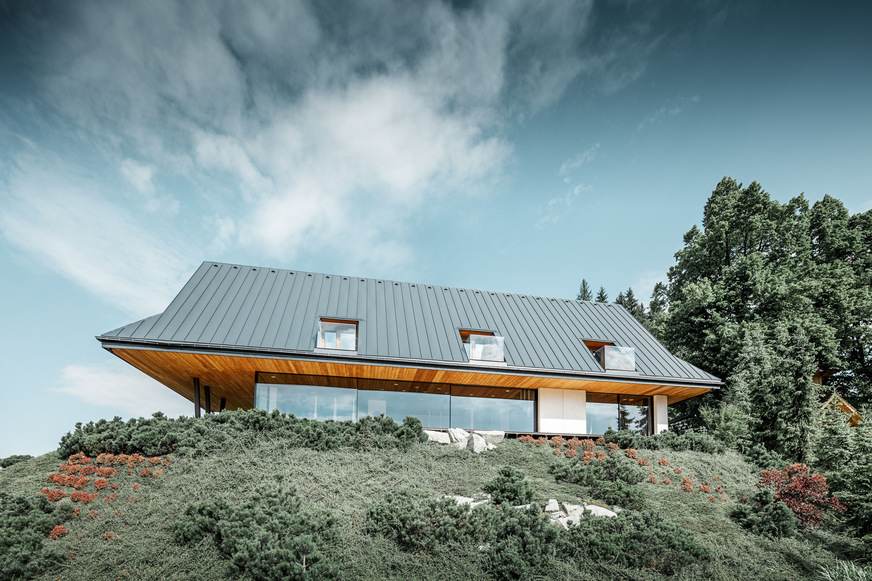
Prefa
True teamwork
“The architectural style is good for this region,” say the architects bullish of their vision, as they transport traditional Zakopane architecture into the modern world. Aluminium, as a material, plays a decisive role in their projects and buildings. They simply like working with it.
“In Poland, there is only steel,” they say. But Aluminium boasts superior characteristics and can be used in a myriad of ways. It’s especially flexible and very weather resistant—and that is a major issue for winter sports. Winter and mountain sports are another pas- sion the two architects share. They go climbing and skiing together—and in both you must be able to rely on your partner and trust them blindly. This teamwork functions in the mountains as it does in the office that they founded together in 2006. They now also have a second one in Krakow.
Understanding without speaking
Wood is the central element in Zakopane.Poland’s favourite winter sport resort is characterised by massive wood buil- dings—an elegant aluminium roof is a rarity. Marcin Uroda knows how to make it work and built “Tatra House” using PREFA products.
“It stands out among the rest of the buildings here in Zakopane,” says Marcin Uroda, artisan, tinsmith and owner of Blacharstwo Budowlane Uroda Marcin. “Most roofs and façades here are made using wood. And then there are a bunch of details. But the architects would like to change things and therefore planned making a roof with a different material,” says the artisan. The first idea was steel. “We quickly concluded that aluminium is much better than steel,” says Uroda. It boasts better flexibility and does not rust. Those are invaluable characteristics for new architecture and essential for the adverse weather conditions up in the High Tatras. In the bitter cold of winter 2018-19, snowdrifts in the valley got up to 1.80 meters.
Marcin Uroda learned quickly how to effectively use PREFA material. He spent time at the PREFA Academy at PREFA HQ in Marktl, Austria, and knows just how many different conditions aluminium can be used in. In addition to the flexibility, he sees the complete system as a huge plus for the comprehensive product range. “The individual parts harmonise perfectly,” emphasises Uroda. Accordingly, the biggest hurdle to overcome was convincing the surrounding communi- ties and neighbours of the project, since the technical implementation was a breeze for the roof and façade professional. The “Tatra House” is no longer the only construction with an aluminium roof; there have been many copycats and Uroda now has a massive backlog of orders. His current project is putting an aluminium roof on a large hotel. That’s where you’ll find him, his father and his brother.
Uroda’s company is truly a family business. His father founded the company 40 years ago, Marcin has worked there for the past 20. He never wanted to do anything else. His father’s work always fascinated him and he was his role model for his own career. This love of his craft spans generations: “We understand each other without speaking,” says Marcin Uroda. And that’s his secret to success when on the job.

